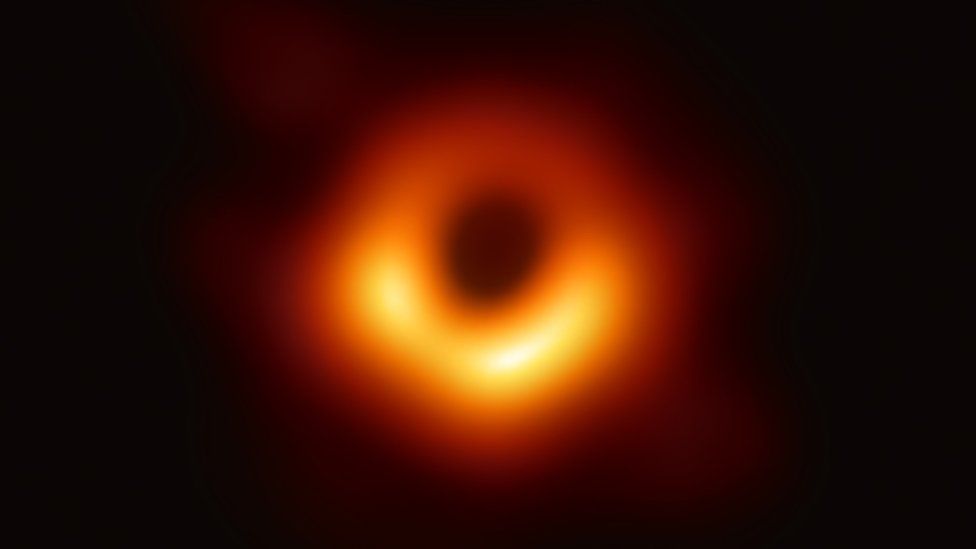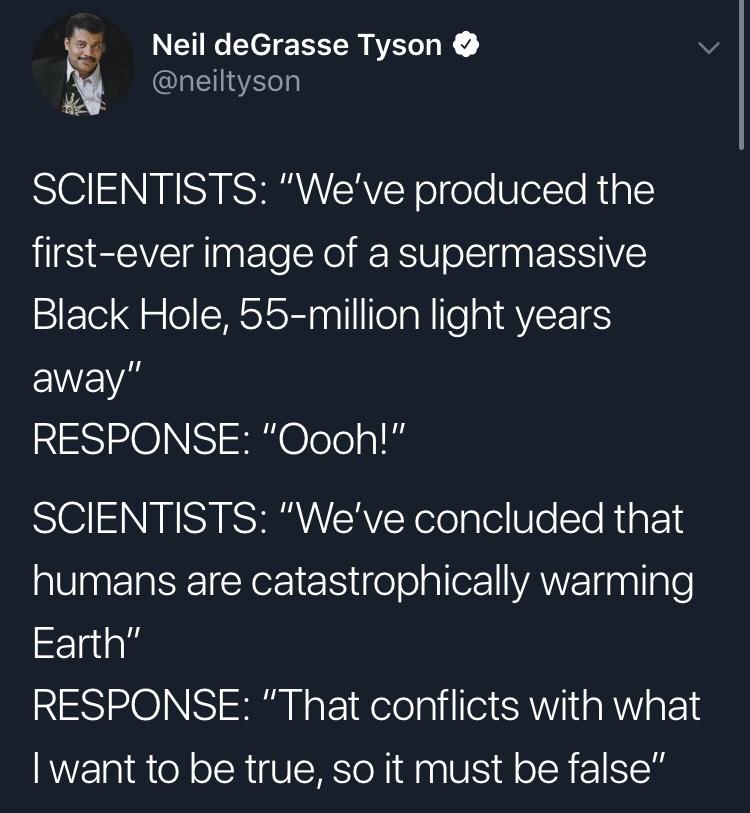Its a Monster, Its 40 billion km across, it has a mass 6.5 billion times that of the Sun and luckily for us its 500 million trillion km away.
Astronomers have taken the first ever image of a black hole, which is located in a distant galaxy.
It measures 40 billion km across - three million times the size of the Earth - and has been described by scientists as "a monster".
The black hole is 500 million trillion km away and was photographed by a network of eight telescopes across the world.
Details have been published today in Astrophysical Journal Letters.
Prof Heino Falcke, of Radboud University in the Netherlands, who proposed the experiment, told BBC News that the black hole was found in a galaxy called M87.
"What we see is larger than the size of our entire Solar System," he said.
"It has a mass 6.5 billion times that of the Sun. And it is one of the heaviest black holes that we think exists. It is an absolute monster, the heavyweight champion of black holes in the Universe."
https://www.bbc.co.uk/news/science-environment-47873592
What is a black hole?

Astronomers have taken the first ever image of a black hole, which is located in a distant galaxy.
It measures 40 billion km across - three million times the size of the Earth - and has been described by scientists as "a monster".
The black hole is 500 million trillion km away and was photographed by a network of eight telescopes across the world.
Details have been published today in Astrophysical Journal Letters.
Prof Heino Falcke, of Radboud University in the Netherlands, who proposed the experiment, told BBC News that the black hole was found in a galaxy called M87.
"What we see is larger than the size of our entire Solar System," he said.
"It has a mass 6.5 billion times that of the Sun. And it is one of the heaviest black holes that we think exists. It is an absolute monster, the heavyweight champion of black holes in the Universe."
https://www.bbc.co.uk/news/science-environment-47873592
What is a black hole?
- A black hole is a region of space from which nothing, not even light, can escape
- Despite the name, they are not empty but instead consist of a huge amount of matter packed densely into a small area, giving it an immense gravitational pull
- There is a region of space beyond the black hole called the event horizon. This is a "point of no return", beyond which it is impossible to escape the gravitational effects of the black hole






![BREWING THERMOMETER STICKERS ACCURATELY MONITOR FERMENTING BEER & WINE LIQUID TEMPERATURES 5PCS HOME BREW SPIRITS WINE LCD ADHESIVE [US]](https://m.media-amazon.com/images/I/311DDjo2X3L._SL500_.jpg)





































